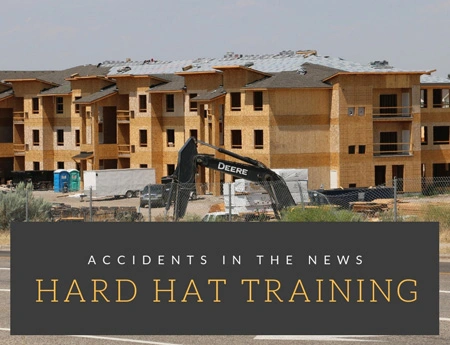
It’s Friday, so we thought we’d end the week with some recent accidents in the news and some tips to stay safe if you find yourself using any of this equipment.
Accident #1
The first accident comes from Boston where 2 men were injured operating a scissor lift. Initial reports on the accident say that both men were strapped to the lift when it fell 20 feet, but injuries are not expected to be life-threatening. We haven’t found more information about the incident, but we are assuming that an investigation is ongoing.
We may not be sure why this accident happened, but OSHA does offer safety tips when operating scissor lifts. Here are some highlights of what they include, but you can read more here:
How to Safely Use Scissor Lifts
Employers need to assess the work site to identify all possible hazards in order to select the appropriate equipment for the task. Employers who use scissor lifts need to evaluate and implement effective controls that address fall protection, stabilization, and positioning. Only trained workers are allowed to use scissor lifts, and employers must make sure that those workers show that they can use a scissor lift properly. Safe scissor lift use includes properly maintaining the equipment, following the manufacturer’s instructions, providing workers with training and needed personal protective equipment (PPE), and implementing safe work practices.
Stabilization
Employers should ensure that scissor lifts are stable and will not tip over or collapse. Some safe work practices to ensure safe, stable conditions for scissor lift use include:
- Follow the manufacturer’s instructions for safe movement—this usually rules out moving the lift in an elevated position.
- Isolate the scissor lift or implement traffic control measures to ensure that other equipment cannot contact the scissor lift.
- Select work locations with firm, level surfaces away from hazards that can cause instability (e.g., drop-offs, holes, slopes, bumps, ground obstructions, or debris).
- Use the scissor lift outside only when weather conditions are good.
- Avoid using scissor lifts in wind speeds higher than their safety rating.
Employers can prevent the collapse of scissor lifts by:
- Maintain all anti-collapse safety systems, watching for any safety bypasses.
- Never allow the weight on the work platform to exceed the manufacturer’s load rating.
- Never allow equipment other than the scissor mechanism to be used to raise the work platform (e.g., using a forklift to lift the work platform).
- Keep the lift from being struck by other moving equipment on the worksite.
Training Workers
Employers must provide workers training on hazards, including how to work safely with or near scissor lifts. [29 CFR 1926.454] Training must, at a minimum, include:
- The correct procedures (e.g., the manufacturer’s instructions) for operating the scissor lift vertically and while in transit.
- How to handle materials on the scissor lift, including weight limits.
- Other worksite hazards workers may encounter when working on a scissor lift (e.g., contact with electrical wires).
Employers should also train workers in reporting any equipment defects or maintenance needs.
If you are in need of training, you’re in luck. We offer Aerial Lift Training.
Accident #2
Our second story of accidents in the news comes out of Maryland, where a man died while operating a skid steer. According to early reports, the machine arm caught the man’s head against the cab. Responders freed him, but they pronounced him dead at the scene.
This type of accident is more common than you might think. Whether the accident happens during maintenance activities or while operating, it’s important to know what steps you an take to avoid being crushed by moving parts. OSHA has created a manual with safety tips when it comes to skid steer operations. Consider these tips from Lesson 3:
- Never enter or exit under a raised attachment because it could fall on you.
- Never start the engine or operate controls from outside of the cab. The loader or lift arm attachments can move and crush you.
- Always fasten your safety belt and lower the safety bar when you in the operator’s seat to stay securely and safely in the cab.
- Never climb into or out of the cab while the engine is running. If you bump the controls, the arm could crush you.
- Never lean out of the cab while the engine is running. Keep your head, arms and legs inside or moving lift arms or attachments might crush you.
- Never lift an attachment above a person. Loads can shift or fall out, or the attachment can drop unexpectedly, crushing anyone under it.
- Never lift loads so high or roll attachments back so far that material dumps into the cab, landing on you.
We also offer Skid Steer Training covering these safety tips, as well as many others. If you are interested in other safety training topics, visit our site at www.www.hardhattraining.com.
